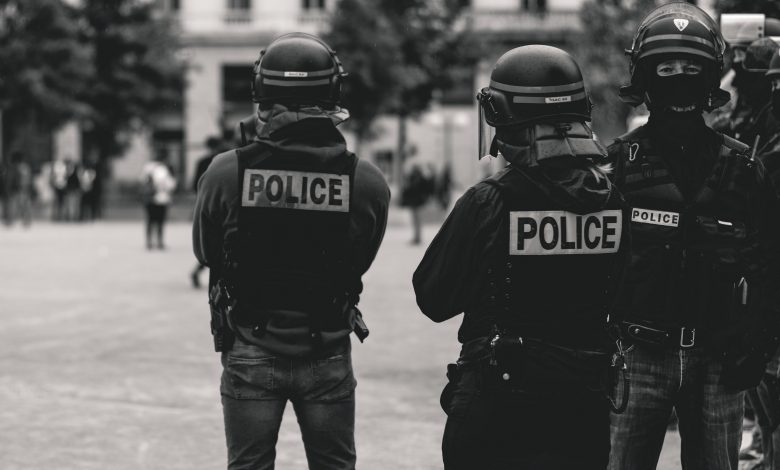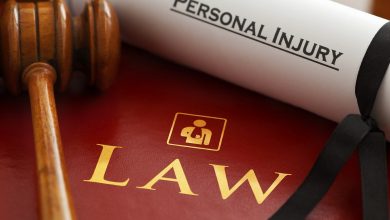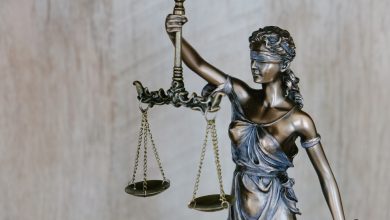Is Qualified Immunity a Get Out of Jail Free Card for Police?

Qualified immunity is a particularly sensitive subject if you are reading this in modern-day 2020. Until recently, qualified immunity is not a term many were likely to be familiar with. The way qualified immunity works is that it protects authority figures from being liable for actions taken in the line of duty. With millions of Americans now aware of qualified immunity and how it can be abused, the U.S. Supreme Court and state jurisdictions have decided to take a closer look at how they handle each case. Below we will go over exactly what qualified immunity is and how it may be changing.
George Floyd, Breonna Taylor, and Rayshard Brooks
The recent killing of 46-year-old George Floyd at the hands of the Minnesota Police Department has thrust the doctrine of qualified immunity into the spotlight. George Floyd’s death is not the only life on the hands of police officers in 2020. On March 13, 26-year-old Breonna Taylor was shot eight times by Louisville police while in bed. The officers used a battering ram to enter her residence on a “no-knock” warrant.
Less than three weeks after the George Floyd killing, 27-year-old Rayshard Brooks was shot in the back after running from Atlanta police officers in a Wendy’s parking lot. Brooks was found sleeping in his car and failed a sobriety test. Upon being handcuffed, Brooks tried to flee, and as he ran away, a police officer fired three shots, hitting Brooks twice in the back and killing him. The third shot hit a car with three people inside. After Brooks went down, the officer said, “I got him.” Instead of providing timely first aid, as Brooks’ life slipped away, the officer kicked Brooks.
With three deaths, all African Americans at the hands of white police, in such a short amount of time, outrage has spread across the nation like wildfire. Is qualified immunity a get out of jail free card for the police? The short answer is no, but the long answer begins by saying that the police and other government officials are protected against civil suits in a way that the rest of Americans are not.

What Is Qualified Immunity?
Qualified immunity protects government officials from being sued for infringing on someone’s constitutional rights—so long as their actions did not break a “clearly established” law. What this means is that even if a police officer violates a person’s constitutional rights, the person cannot sue the officers for damages unless the victim can prove that the officer violated a right unequivocally established by a previous court ruling.
Qualified immunity is a type of sovereign immunity that is less strict than absolute immunity. Absolute immunity protects law enforcement officers from any type of punishment, whether it be civil liability or criminal liability.
In short, qualified immunity does not protect a government official from being tried in a court of law for illegal actions, but it does protect them from having to pay out damages to the people whose civil rights were violated. In the case of two of the killings above, the police officers are facing legal repercussions.
Origins of Qualified Immunity
Qualified immunity was first introduced by the United States Supreme Court in 1967. The rationale was to protect law enforcement from frivolous lawsuits and financial liability when they had acted in good faith under unclear legal situations. However, the use of qualified immunity has gone far beyond the original intention of preventing “frivolous” lawsuits.

Should Qualified Immunity Be Overturned?
Before we look at the punishments facing the officers in the Breonna Taylor, George Floyd, and Rayshard Brooks cases, let’s look at an example specifically focusing on qualified immunity.
The date is March 24, 2011, in Madill, Oklahoma.
A 34-year-old man, Johnny Leija, was agitated, confused, and sick with pneumonia in a hospital. Staff in the hospital had called police to assist in giving Leija an injection to help calm him. The police shot Leija with a stun gun and followed him down a corridor, shooting him a second time. An officer then wrestled Leija to the floor and straddled his back, trying to handcuff him as another officer pulled back his arms. After getting one handcuff on, Leija went limp.
Hospital staff attempted to revive him, but Leija died on the floor of a collapsed lung. Already sick with pneumonia, his body was starved for oxygen, and Leija died from respiratory insufficiency. The police officers on the scene were not charged, as the county sheriff and Madill police chief defended their actions.
Leija’s mother, Erma Aldaba, sought out justice, so she took the only route she believed was available and sued the police officers. However, she quickly ran into the little-known doctrine of qualified immunity. But at first, the judge hearing the case rejected qualified immunity.
The appeals process for police requests for qualified immunity asks two questions. The first is whether excessive force was used to violate the Fourth Amendment. The second is whether the officers should have known that they were violating a “clearly established law.” The appeals court answered “yes” to each question. However, at the request of the officers, the Supreme Court intervened.
The Supreme Court justices instructed the appeals court to reevaluate its ruling, saying that they disagreed. Alba’s lawyer argued a second time that the actions taken against Leija were “clearly established” as illegal. He cited multiple cases in which officers were held accountable for their excessive force on people who were unarmed and mentally compromised. However, this time, the court ruled that those previous cases were not close enough to warrant a clearly established law, and the police officers became protected by qualified immunity.
Supreme Court and Qualified Immunity
In early June 2020, it appeared that the Supreme Court could be looking to change qualified immunity. However, that turned out not to be the case. The Supreme Court will not be reexamining qualified immunity, and it appears that the doctrine is here to stay—at least for now.

Police Penalties for Excessive Use of Force
Below are the consequences for the police officers in the killings of George Floyd, Breonna Taylor, and Rayshard Brooks.
What Happened to the Police Officer Who Killed George Floyd?
Derek Chauvin is the police officer who slowly snuffed the life out of George Floyd by kneeling on his neck for over eight minutes, despite Floyd telling him repeatedly, “I can’t breathe.” Derek Chauvin was charged with second-degree murder, third-degree murder, and second-degree manslaughter.
Initially, Chauvin was only charged with third-degree murder and second-degree manslaughter. Upon further review, Minnesota Attorney General Keith Ellison charged Chauvin with murder in the second degree. If convicted, the charge of second-degree murder can lead to a sentence of up to 40 years in jail.
When announcing the additional charge at a press conference, Attorney General Keith Ellison said, “Every single link in the prosecutorial chain must be strong. It needs to be strong because trying this case will not be an easy thing. Winning a conviction will be hard.”
What’s the Difference Between Second and Third-Degree Murder?
Second-degree murder is when the perpetrator did intend to kill the person but had not planned to do so prior to the act.
Second Degree Murder in Minnesota
Here is how the law reads according to Minnesota statute 609.19 Subdivision 2:
“Whoever does either of the following is guilty of unintentional murder in the second degree and may be sentenced to imprisonment for not more than 40 years:
(1) causes the death of a human being, without intent to effect the death of any person, while committing or attempting to commit a felony offense other than criminal sexual conduct in the first or second degree with force or violence or a drive-by shooting; or
(2) causes the death of a human being without intent to effect the death of any person, while intentionally inflicting or attempting to inflict bodily harm upon the victim, when the perpetrator is restrained under an order for protection and the victim is a person designated to receive protection under the order. As used in this clause, “order for protection” includes an order for protection issued under chapter 518B; a harassment restraining order issued under section 609.748; a court order setting conditions of pretrial release or conditions of a criminal sentence or juvenile court disposition; a restraining order issued in a marriage dissolution action; and any order issued by a court of another state or of the United States that is similar to any of these orders.”
The second part of the law is what will be focused on in this case. Chauvin appears to be “intentionally inflicting or attempting to inflict bodily harm upon the victim…and the victim is a person designated to receive protection.”
Third Degree Murder in Minnesota
Third-degree murder is also referred to as voluntary manslaughter. It means that the act that leads to the death was intentional, but that the resulting death was not.
Here is how the law reads according to Minnesota statute 609.195:
“(a) Whoever, without intent to effect the death of any person, causes the death of another by perpetrating an act eminently dangerous to others and evincing a depraved mind, without regard for human life, is guilty of murder in the third degree and may be sentenced to imprisonment for not more than 25 years.
(b) Whoever, without intent to cause death, proximately causes the death of a human being by, directly or indirectly, unlawfully selling, giving away, bartering, delivering, exchanging, distributing, or administering a controlled substance classified in Schedule I or II, is guilty of murder in the third degree and may be sentenced to imprisonment for not more than 25 years or to payment of a fine of not more than $40,000, or both.”
Third degree murder was originally the charge against Chauvin before murder in the second degree was added. Part (b) is not applicable in this case. Part (a) boils down to intent. If Chauvin were to be found guilty of murder in the third degree rather than the second degree, the court will be saying that he did not intend to kill George Floyd.
What Is Second Degree Manslaughter?
You can be charged with second-degree manslaughter when you consciously or willfully take a risk that ends in the death of another person.
Here is how the law reads according to Minnesota statute 609.205:
“A person who causes the death of another by any of the following means is guilty of manslaughter in the second degree and may be sentenced to imprisonment for not more than ten years or to payment of a fine of not more than $20,000, or both:
(1) by the person’s culpable negligence whereby the person creates an unreasonable risk, and consciously takes chances of causing death or great bodily harm to another; or
(2) by shooting another with a firearm or other dangerous weapon as a result of negligently believing the other to be a deer or other animal; or
(3) by setting a spring gun, pit fall, deadfall, snare, or other like dangerous weapon or device; or
(4) by negligently or intentionally permitting any animal, known by the person to have vicious propensities or to have caused great or substantial bodily harm in the past, to run uncontrolled off the owner’s premises, or negligently failing to keep it properly confined; or
(5) by committing or attempting to commit a violation of section 609.378 (neglect or endangerment of a child), and murder in the first, second, or third-degree is not committed thereby.
If proven by a preponderance of the evidence, it shall be an affirmative defense to criminal liability under clause (4) that the victim provoked the animal to cause the victim’s death.”
Part (1) of Minnesota law is what will likely apply in this case. The three other officers on the scene displayed what could be argued as “culpable negligence whereby the person creates an unreasonable risk, and consciously takes chances of causing death or great bodily harm.”
What Will Happen to Derek Chauvin and Other Officers?
Derek Chauvin and three other officers present at the time were fired from the Minneapolis Police Department. The three officers that stood by while George Floyd was killed were charged with aiding and abetting second-degree murder and aiding and abetting second-degree manslaughter.
Minnesota law states that aiding and abetting is when a “person is criminally liable for a crime committed by another if the person intentionally aids, advises, hires, counsels, or conspires with or otherwise procures the other to commit the crime.”
The first count of aiding and abetting second-degree murder is a felony that is punishable by up to 40 years in jail. The second count of aiding and abetting second-degree manslaughter has a penalty of up to ten years in jail and a fine that can reach $20,000.
What Happened to the Police Officer Who Killed Breonna Taylor?
Three officers were involved in the shooting death of Breonna Taylor in her Louisville home. Detective Myles Cosgrove, Detective Brett Hankison, and Sergeant Jon Mattingly, all narcotics officers, were present at the time of the shooting. Despite the incident taking place in March, three months later, none of the officers have been fired.
The reason all three officers still have their jobs is that there is not enough indisputable evidence against them. Unlike in the case of George Floyd, there is no video of the incident. And while accounts vary between Breonna’s boyfriend, who was in bed with her, and the police officers, the police receive the benefit of the doubt.
However, accounts of the event detail Detective Hankinson shooting through a closed window with the blinds drawn and then immediately fleeing the scene. The attorney representing Breonna Taylor’s family believes that this action should have been enough for Hankinson to be fired. Hankinson was gone for two hours after fleeing the scene.
What Happened to Breonna Taylor?
On March 13, just after midnight, three plainclothes Louisville police officers using a no-knock search warrant used a battering ram to break into Breonna Taylor’s apartment. A brief confrontation ensued, and Taylor was shot at least eight times. A no-knock warrant allows the police to enter without warning and without identifying themselves as police.
The police were investigating two men who were believed to be selling drugs and using Taylor’s house for delivery. The police claim that they knocked several times and announced themselves as police. However, this account differs from Kenneth Walker’s account. Walker was Breonna’s boyfriend, who was in bed with her. He said that there was a loud bang on the door and that Breonna yelled, “Who is it?” There was no response, so Walker took out a gun that he is licensed to carry.
According to Walker’s attorney, he shot in self-defense. He was arrested and charged with both assault and attempted murder on a police officer, but the charges were later dismissed. More than 20 rounds were shot into Taylor’s home, hitting objects in every room and hitting her at least eight times.
The no-knock warrant was deemed necessary because, according to police records, “these drug traffickers have a history of attempting to destroy evidence, have cameras on the location that compromise detectives once an approach to the dwelling is made, and have a history of fleeing from law enforcement.”
However, Taylor was not the subject of the investigation. The prime suspect of the investigation had already been identified as Jamarcus Glover, who lived over ten miles away from Taylor’s apartment. Taylor’s family filed a lawsuit seeking punitive and compensatory damages, and the case is still under investigation.
What Happened to the Police Officer Who Killed Rayshard Brooks?
The police officer that shot and killed Rayshard Brooks with two bullets to the back has been charged with felony murder and ten other charges. The other officer on the scene, Devin Brosnan, has been charged with aggravated assault for allegedly standing on Brooks’ shoulders in the parking lot.



